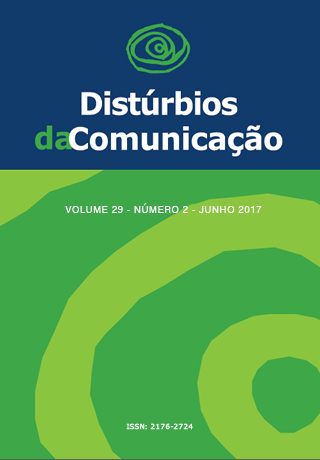P300 - long-latency auditory evoked potential in adolescents
DOI:
https://doi.org/10.23925/2176-2724.2017v29i2p309-317Keywords:
Electrophysiology, Attention, Event-Related Potentials P300, Hearing, Speech, Language and Hearing Sciences, Social Class.Abstract
Introduction: The P300 is an objective procedure for assessment of hearing function. The elicitation of its components involves cortical areas related to perception, attention, auditory memory and cognition mechanisms. Objective: To evaluate the latencies of N1 , N2 , P1 , P2 and P3 in adolescents according to nutritional status and social, economic, demographic and educational variables Methods: A case series study was carried out involving 32 adolescents aged 13-18 years of both sexes attending public schools in Recife - PE. The P300 components were analyzed with 200 stimuli by using the Ep Smart Intelligent Hearing Systems (IHS) device. Results: It was observed that adolescents with records of class repetition had higher (p= 0.04) extension of P1 component latency when compared to adolescents without class repletion records, as well as adolescents from higher social-economic profile had better P3 component latency, when compared with those situated in lower socio-economic level. Conclusion: Prolongation in latency of P1 and P3 components were found in adolescents with class repetition records and lower socioeconomic status.Downloads
Downloads
Published
Issue
Section
License
Copyright (c) 2017 Maria da Soledade Rolim do Nascimento, Elisangela Barros Soares-Mendonça, Mariana Carvalho Leal, Lilian Ferreira Muniz, Alcides da silva Diniz

This work is licensed under a Creative Commons Attribution 4.0 International License.









